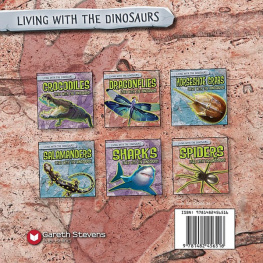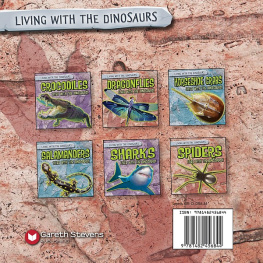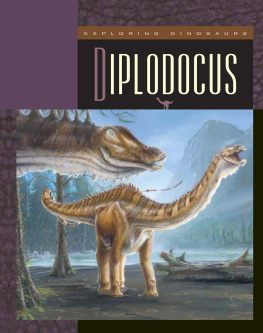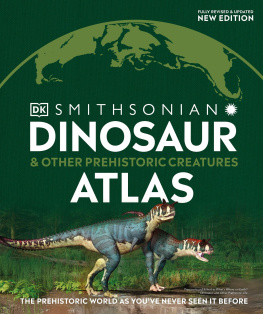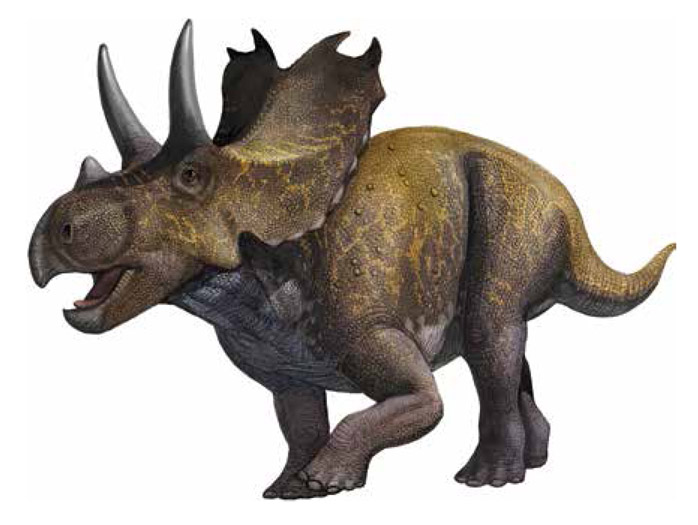About the Author
Bob Strauss is the author of two best-selling question-and-answer books that range across the expanse of science, biology, history, and culture: The Big Book of What, How, and Why (2005) and Who Knew?: Hundreds & Hundreds of Questions & Answers for Curious Minds (2007). Over the past two decades, he has written and edited for various scientific, medical, and general-interest publications, including Entertainment Weekly, Family Circle, and ConsumerSearch. For the past ten years, he has been the dinosaur expert at About.com (dinosaurs.about.com).
About the Illustrator
Ukrainian illustrator Sergey Krasovskiy describes himself as a paleoartist. Since his childhood, he has had a love of pale-ontology and, especially, of dinosaurs. Growing up in Don-bass, a region of Ukraine famous for its coal mineswhich produced huge amounts of slag and rockKrasovskiy collected excavated fossils of ancient ferns. In other layers of rock there have been found shark teeth and the remains of mosasaurs, huge carnivorous aquatic lizards.
Krasovskiy studied art at the Lugansk Art College and, thanks to the Internet, has acquired an international reputation as a freelance illustrator of Paleolithic creatures.
He work will soon appear in two Russian publications: an encyclopedia called the Great Illustrated Atlas of the Dinosaurs by Ruslan Gabdullin, and in Pictures of the Past of the Earth by Maxim Archangel, which Krasovskiy describes as an art book. It contains his illustrations and the work of Russian-speaking paleoartists Andrey Atuchin, Roman Evseeva, and Nicholas Zverkova.
Because of the civil war in Donbass, Krasovskiy and his family left their home in Lugansk and moved to Kharkov. He describes himself and his family as refugees.
Before You Head into the Field
Setting the Scene
Lets take a pretend trip back about 65 million to 250 million years ago to the Mesozoic era, when trillions of dinosaurs roamed the expanse of what we now call North America. Not only trillions of dinosaurs, but trillions of each kind of dinosaur: meat-eating tyrannosaurs, feathered raptors, horned, frilled ceratopsiansyou name it.
To put the number into perspective: Only about one hundred billion human beings have ever been born, and thats counting back to an arbitrary starting point of fifty thousand years ago. Raise that number by the vast expanse of deep geologic time and youll get a sense of how impressive the dinosaurs two-hundred-million-year dominance really was.
Of course, peek in at any given time in North Americas past and youll see that not all dinosaurs were equally represented. Some were naturally more populous than others (during the late Jurassic period, for instance, plant-eating ornithopods like Camptosaurus vastly outnumbered meat-eating theropods like Allosaurus, for the same reason that there are a lot more wildebeests in Africa today than there are big catsit takes a large population of herbivorous animals to support a smaller population of meat-eating ones).
Take any slice through deep geologic time, in any region of North America, and youll find a unique ecosystem: sauropods and hadrosaurs munching on different types of vegetation; small, feathered dino-birds and weirdly clawed therizinosaurs joined in an intricate ecological competition for prey; dim-witted stegosaurs and ankylosaurs employing their sheer bulk (and their arsenal of spikes and clubs) to dissuade hungry tyrannosaurs like Albertosaurus.
Lets not forget the environmental conditions in which these dinosaurs lived, which may (over and above the possibility of being stepped on or eaten) pose the single biggest obstacle to your dinosaur-watching expedition. Average temperatures on earth millions of years ago were much, much higher than they are today. Were talking a steady ninety-five or one hundred degrees Fahrenheit year-round, with humidity levels comparable to a Finnish sauna. Even Antarctica, during much of the Mesozoic era, was warm and wet, so you can imagine what life was like nearer to the equator. This hot, humid climate had two salutary effects: It promoted the growth of the trees, shrubs, and ferns at the base of the dinosaur food chain, and it allowed some of these ostensibly cold-blooded reptiles to lead a more active lifestyle.
Not only was North America much more muggy during the Triassic, Jurassic, and Cretaceous periods, the continent itself, which then was whats called a supercontinent, looked a lot different, so your AAA road maps wont help you here. Until about two hundred million years ago, North America was part of the supercontinent Pangea, which included the future Eurasia to its northeast, and Africa, South America, Antarctica, and Australia to its south. By the start of the Jurassic period, North America and Eurasia (in the form of the supercontinent Laurasia) had started to separate from the bulk of Pangea (the bigger, southern portion henceforth being known as Gondwana). And by the start of the Cretaceous period, fifty million years later, North America itself had begun to drift westward from Eurasia, as the worlds spreading continents started to approximate their modern shapes and distributions.
Given its extreme climate, and its tectonic shenanigans vis--vis Laurasia and Gondwana, North America itself was a very different place geologically during the Mesozoic era than it is today. For much of this time, a huge portion of the continent was covered by the Western Interior Sea, which accounts for the profusion of marine reptiles that have been discovered in Kansas. This shallow body of water separated the huge western island of Laramidia (the home of classic dinosaurs like Apatosaraus and Stegosaurus) from the eastern island of Appalachia, which had its own unique dinosaur ecosystem. It was only three million years ago that the Central American land bridge formed between North America and South America, which would have fateful consequences for the mammalian megafauna of the time, like the Saber-Tooth Tiger.
But all you want is a selfie with an Ankylosaurus. So why should you care about the deep geologic history of North America? For one thing, this history helps explain why practically every dinosaur discovered in North America had a close cousin (or even a member of the same genus) that lived in Eurasia. Thats to be expected, given that these continents spent over one hundred million years in happy wedded Laurasian bliss. It also helps to contextualize the fact that the very first dinosaurs evolved in South America about 230 million years ago and gradually spread to the northern reaches of Pangea (which became Laurasia, which became North America and Eurasia) as well as east and south to Africa, South America, and Australia.
In other words, we can thank Pangea for the worldwide distribution of dinosaurs during the Mesozoic era, but we can thank the breakup of this enormous continent for the subsequent extremes of dinosaur diversity.
Which brings us to another crucial bit of background for your dinosaur-watching expedition: dinosaur evolution. The first dinosaurs of southwestern Pangea (i.e., modern South America) evolved from a family of reptiles called archosaurs, which also went on to spawn, during the middle Triassic period, the first true pterosaurs (flying reptiles) and crocodiles. (Simultaneously, an unrelated branch of reptilesthe therapsidswere morphing into tiny, skittering mammals.) The first true dinosaurs werent much to look at by later standards, but these small, two-legged, insatiable reptiles quickly spread across the length and breadth of Pangea, competing all the while with crocodiles, early mammals, and even the archosaurs that had spawned them (not all archosaurs turned into dinosaurs, so significant populations persisted until the end of the Triassic period).


